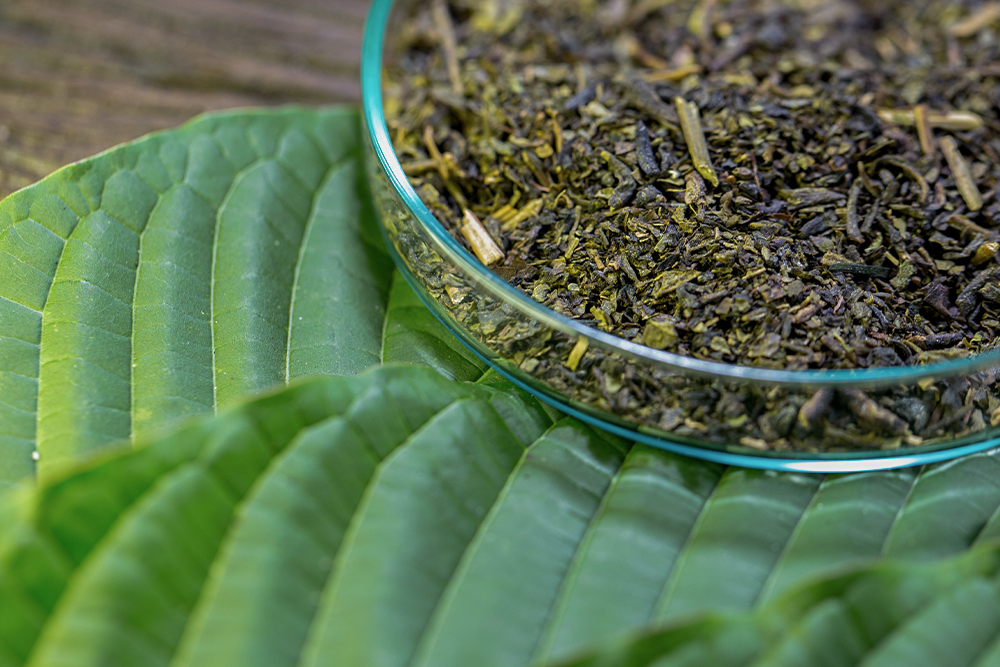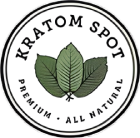The Differences Between Mitragyna Javanica & Kratom


The Differences Between Mitragyna Javanica & Kratom
- June 2025
- By: The Kratom Spot Team
Kratom, also known as mitragyna speciosa, is gaining popularity in the US, but it’s hardly a household name. Still, it’s far better known than some of its cousins. But one kratom cousin is getting more attention these days: mitragyna javanica.
Is it the new must-try? A kratom toppler? Or just another alternative suited for some users?
In this article, we do a side-by-side comparison of these two botanical nootropics, giving you the run-down on how they compare and, ultimately, why kratom is probably still the preferable option for you.
To explore more detailed information about mitragyna javanica or kratom, read more.
What Is Mitragyna Javanica?
Kratom and mitragyna javanica have a lot in common. Both come from trees native to Southeast Asia and are members of the Rubiaceae family (making them cousins of coffee, as reflected in the latter’s “javanica”). Moreover, both kratom and mitragyna javanica are used for a variety of beneficial effects, including energy and mood boosts.
Mitragyna javanica (or Mitrajavine or just Javanica) can be thought of as a less potent form of kratom. Still, the differences are worth noting and should be taken into consideration when choosing which is right for you. When comparing the two, it is important to consider various aspects such as historical background, traditional use, and pharmacology.
Related Species
The Mitragyna genus is home to several fascinating species, each with its own unique characteristics and native habitats. Among the most well-known are Mitragyna speciosa (commonly known as kratom), Mitragyna hirsuta, and Mitragyna javanica Koord. and Valeton. These species are distributed across different regions of the world, with Mitragyna speciosa thriving in the lush, tropical forests of Southeast Asia, while Mitragyna hirsuta is found in both Africa and Asia’s tropical zones. Mitragyna javanica Koord. And Valeton, as its name suggests, is native to parts of Southeast Asia as well.
Extensive research by institutions like the Royal Botanic Gardens has shed light on the botanical origins and historical background of these Mitragyna species. Their studies have helped clarify the relationships within the genus and provided valuable data on the evolution and distribution of these plants. Understanding the diversity within the Mitragyna genus not only enriches our knowledge of kratom and its relatives but also highlights the global significance of these species in both ecological and cultural contexts.
Traditional Uses
For centuries, Mitragyna species have played a vital role in traditional medicine across the regions where they naturally grow. The leaves of Mitragyna speciosa, in particular, have been used by local communities to address a range of ailments, from pain and fever to fatigue and digestive issues. Traditional preparations often involve drying the leaves to brew into a tea or simply chewing them raw to release their active compounds.
Narrative reviews highlight the importance of these traditional uses, not only as part of the historical background of the Mitragyna genus but also as a foundation for modern research into their potential as pharmaceutical products. The deep-rooted cultural practices surrounding Mitragyna species offer valuable insights into their safety, efficacy, and potential applications, making them a subject of ongoing review and interest in both ethnobotanical and pharmacological studies.
Pharmaceutical Applications
The scientific exploration of Mitragyna species has revealed a wealth of alkaloids with promising pharmaceutical potential. Researchers have isolated and analyzed these molecules using techniques such as equivalent weight determinations, elemental analysis, and physical data collection to better understand their structure and function. Notably, the methoxy ajmalicine type molecule and other unique alkaloids have been identified, with NMR spectrum analysis—such as the observation of a two-proton singlet at around 7.2 ppm, indicating the presence of a water molecule—providing further insight into their chemical makeup.
These alkaloids have shown potential in pharmacology as pain relievers and anti-inflammatory agents, but their toxicity, risk of addiction, and potential for abuse remain important considerations. Legal issues surrounding the use of Mitragyna species continue to evolve, and the cultivation and habitat of these plants are critical factors in their sustainable development as pharmaceutical products. While the results so far are promising, more research is needed to fully unlock the potential of Mitragyna species and ensure their safe and effective use in modern medicine.
Key Differences Between Mitragyna speciosa (Kratom) and Mitragyna Javanica
Even though they’re sometimes used for similar purposes, kratom and Mitrajavine are very different botanicals with distinct chemistry, legal status, and more. Here are a few of the most notable differences:
Alkaloid Content
First and foremost, kratom and mitragyna javanica contain different alkaloids (the natural compounds responsible for their unique effects).
Kratom’s main alkaloids are mitragynine and 7-hydroxymitragynine, which appear in various proportions based on each kratom strain. Mitragynine is principally responsible for the uplifting effects of some strains, while 7-hydroxymitragynine is responsible for the sedative effects of others.
Mitragyna javanica does not contain either of these alkaloids. Instead, its principal alkaloids are mitrajavine and 3-isoajmalicine. The alkaloids from mitragyna javanica include oxindole alkaloid types, and their structural elucidation has been detailed in studies by Lee, Rosen, and Williams. Comparative analysis shows that mitragyna javanica, mitragyna hirsuta havil, and valeton and mitragyna hirsuta share some similarities in their alkaloid profiles, such as the presence of methoxy-ajmalicine type alkaloids, but also exhibit distinct differences in chemical structure and composition.
Some users report that these alkaloids create an experience similar to kratom’s.
But little is known about mitrajavine and 3-isoajmalicine, leading us to our next point.
Available Research
Kratom has been the subject of reasonably significant clinical research worldwide. While US research lags behind, an increasing number of clinical studies are looking into kratom’s safety, effectiveness, and potential for therapeutic applications.
But the same can’t be said of mitragyna javanica, which has received virtually zero clinical attention to date. Very few published studies exist on mitragyna javanica, and as a result, it is rarely cited in scientific literature, with minimal citations available in academic databases. As such, very little is known about it, nor about its safety, effectiveness, or legitimate applications. As such, available information is based almost purely around word-of-mouth user testimonials.
That relative obscurity is one reason to be wary, but it also leads to one of its main draws.
US Legality
Kratom is available throughout the vast majority of the United States — although the FDA continues to talk about bans, both at the federal and international levels. Several states have implemented local bans, however. These are:
- Alabama
- Arkansas
- Indiana
- Rhode Island
- Vermont
- Wisconsin
But despite that virtually no research has been done on it, mitragyna javanica is legal throughout the entirety of the US. That’s not because it’s believed to be safer, but only because almost no one is currently talking about it.
Potency
Put simply, mitragyna javanica is significantly weaker than kratom.
Given that they have entirely different alkaloid profiles, it’s virtually impossible to quantify the difference in potency. Moreover, the two will never offer identical effects, making any such effort futile.
Nonetheless, users looking for an experience similar to kratom will find that they need a meaningfully larger dose and will go through their supply more quickly. And speaking of going through your supply…
Price, Availability, and Quality Vendors
Here’s a big one. Because mitragyna speciosa is virtually unknown, there are very few sources for it online. That means worse prices, minimal strain selection, and less competition to provide a quality product.
All of that? It’s bad news for anyone looking to try javanica, especially coupled with the fact that you’ll be going through your supply more quickly than with kratom. Additionally, access to reliable information and high-quality mitragyna javanica products is limited.
Regulation
But this is the absolute distinction between kratom and mitragyna javanica. Neither is fully regulated at the federal level, but several states have rallied around the kratom industry’s internal efforts to establish hard-and-fast quality standards.
With Mitrajavine or javanica, no such standards have been established. It’s a Wild West out there, with virtually no testing, no quality standards, and no transparency throughout the mitragyna javanica industry.
In short: while several well-established, reputable kratom vendors are out there, there’s virtually no way of knowing what you’ll get with mitragyna javanica.
Which Is Right For You?
Based on the above similarities and differences, there’s a fairly clear winner here.
Kratom is more potent and effective, offers a better bang for your buck, is far better understood, and has far superior established quality standards.
The only place where Mitrajavine wins out is in legality. Kratom is banned in six states, while javanica is legal throughout the entirety of the US.
It’s a fairly clear cut decision tree:
- Live in Alabama, Arkansas, Indiana, Rhode Island, Vermont, or Wisconsin? Then mitragyna javanica is the choice for you (if the above factors haven’t dissuaded you from even trying).
- Live anywhere else in the US? Kratom is the right choice based on virtually every other metric.
Kratom and Mitragyna Javanica: Final Thoughts
Between kratom’s cousins, mitragyna javanica is the one that’s getting a bit more attention. But despite the fact that they share some similarities, kratom and javanica are very different plants.
Of note to consumers weighing the two, kratom is better researched, better regulated, more potent, and more cost effective. However, kratom is banned in six US states, while mitragyna javanica is legal throughout the US.
Weighing the differences, it’s difficult to argue in favor of javanica. Users looking for a quality experience should look to established, reputable vendors like Kratom Spot, or one of the American Kratom Association’s other GMP Certified Vendors
But regardless of which you choose, remember the golden rule: it’s important to speak with your doctor before adding any new supplement into your health and wellness regimen.
